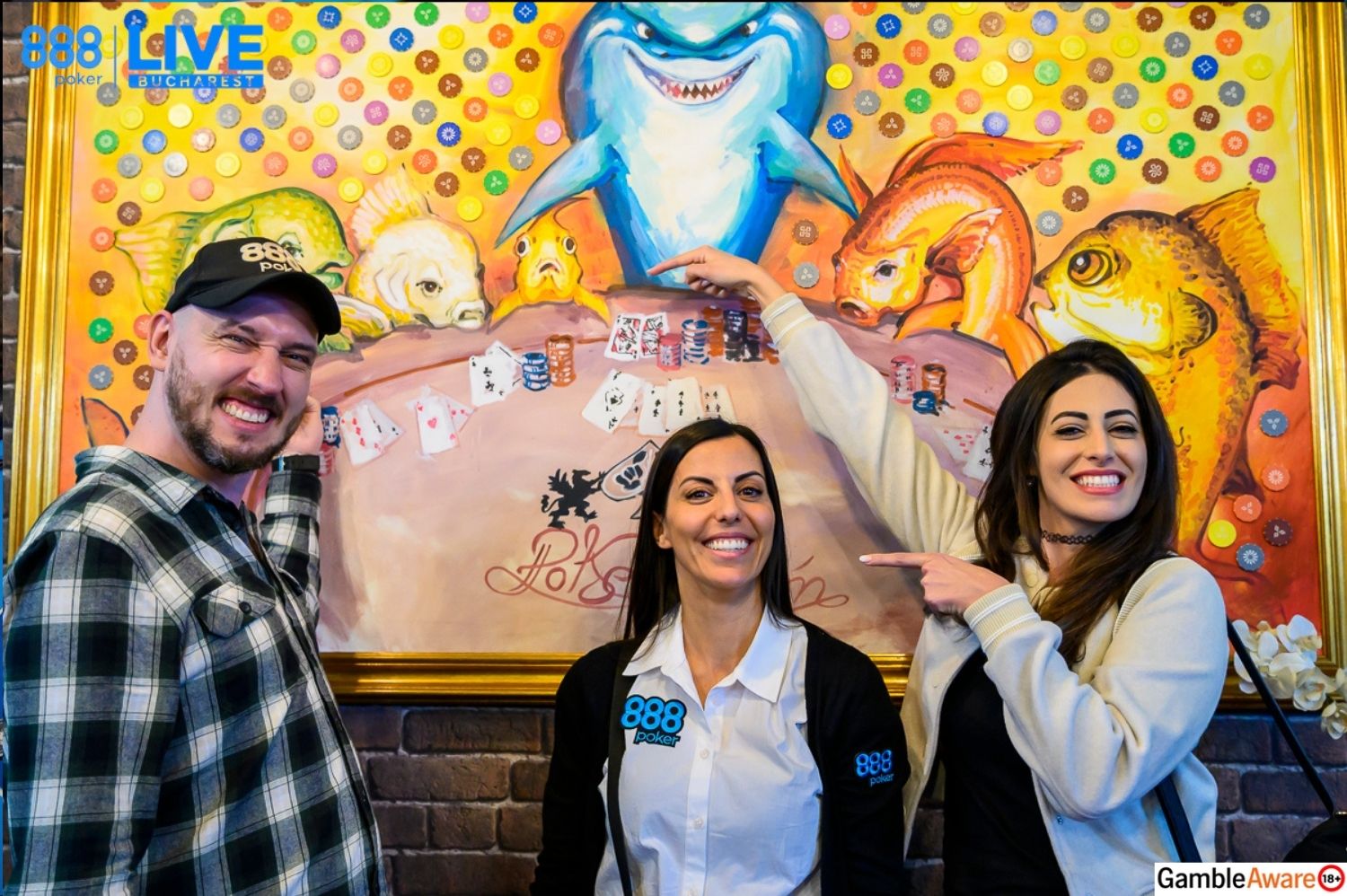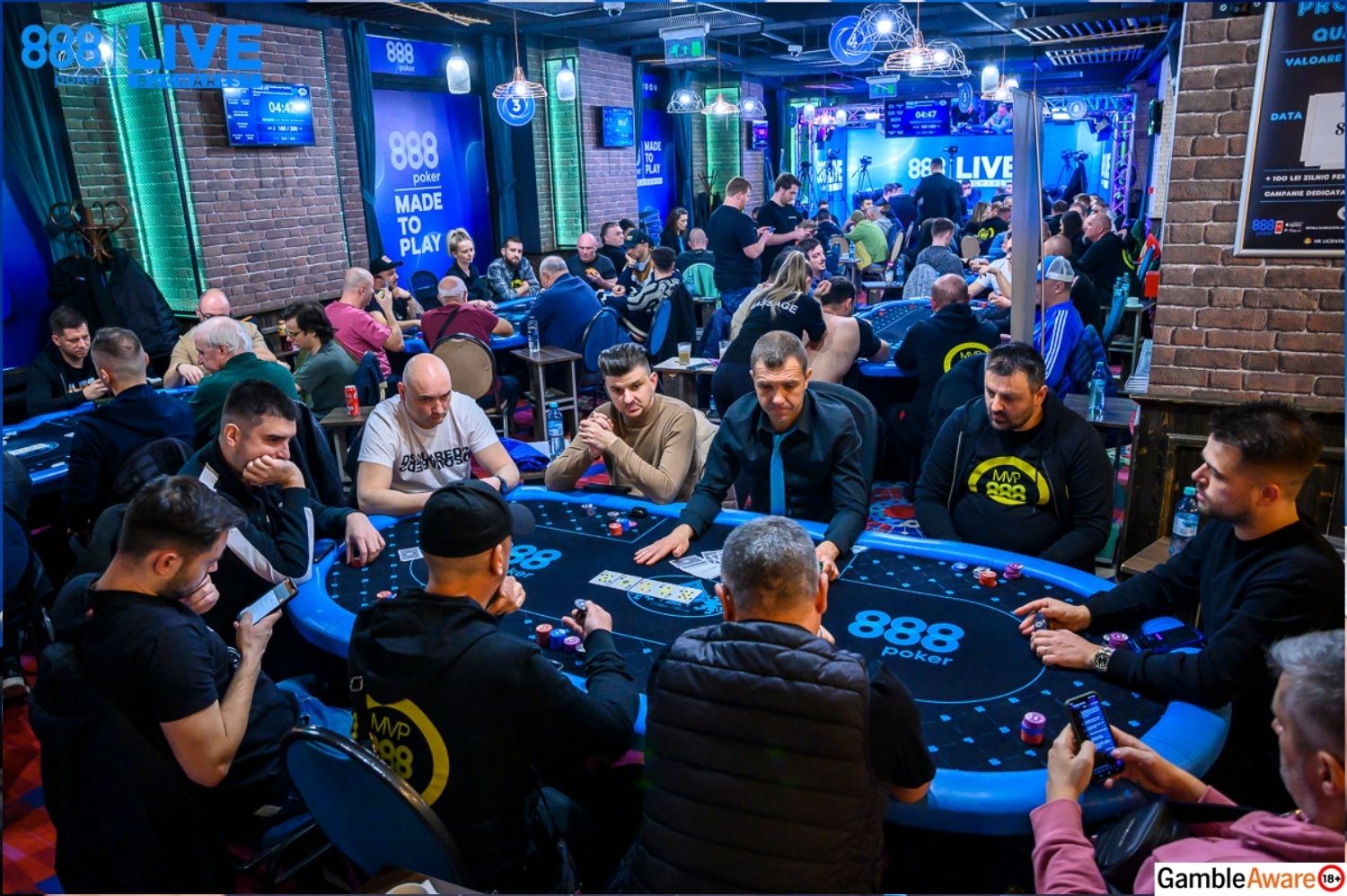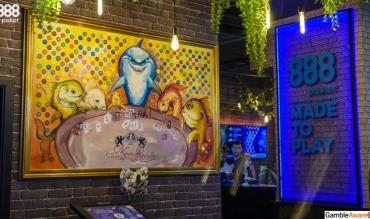Updated on June 20, 2025
We all play poker for different reasons:
- Some people crave money and glory, while others enjoy mental test and stimulation.
- Others play an orbit to kill five minutes in the bathroom.
However, one breed of poker player desires something far purer. This delight can’t be recreated while sitting on the porcelain throne:
It’s the thrill of brick and mortar cardrooms.
What Is a Brick and Mortar Cardroom?
The poker term Brick and Mortar refers to live cardrooms, especially those in Vegas-like casinos.
Like most other slang, the first use is unknown. However, the expression comes from how buildings are constructed using brick and mortar.
What’s So Special About Brick and Mortar Casinos?

Many things contribute to the allure of brick and mortar casinos:
- The texture of the felt
- The chirp of chips
- The suspense of all-ins
- The luxury of leaning on the padded table rail
- Squeezing your cards to see your poker hand
World-class brick and mortar cardrooms like the Bellagio or Aria enrich the experience of playing poker games, too.
Masseuses and cocktail waitpersons circulate, helping players relax and escape the hustle and bustle of the outside world.
There's also a sense of community. You see the same faces repeatedly, and though they become your sworn enemies during a pot, conversation flows freely between hands.
Brick and mortar cardrooms offer an escape from nerdy HUDs and simulation software.
In many ways, they’re not just about poker—they’re about enjoying an authentic, tangible experience that online platforms can’t replicate.
Poker Live Reads

Brick and mortar casinos also let you see players face-to-face. Though many online platforms have tried to recreate this with webcams, it pales in comparison to what’s on offer in a real casino.
There’s something poetic about sitting opposite your opponent and trying to interpret subtle cues like how they breathe or check. Tells govern the best poker players of all time on the live circuit.
It adds an extra dimension to poker, and top pros consider it a key part of the game.
Live Tournaments
If you’ve ever had the chance to play in a big live tournament series, the atmosphere is electric. The sound of shuffling chips fills the room like birdsong on a Sunday morning.
Rooms packed with rows of endless tables featuring all variations of poker hum with optimism and anticipation.
You can meet players you've tangled with online and share stories about memorable hands. At the bar, rivalries fade, and players replay their key moments from the day.
Big live events, like world poker tournaments, include entertainment like acrobats, bands, and DJs. They also offer the chance to rail your friends and share the experience of a deep run, even if you busted two days before.

Brick and mortar events can also offer trophy presentations, something online poker providers simply can’t.
Events conclude with cocktails, sparklers, and songs, rather than a popup and a ‘Well done’ GIF on-screen.
Are Brick and Mortar Games Easier?
The standard of poker in brick and mortar cardrooms is generally regarded as lower than in online games of the same stake.
There are a few likely reasons for this:
1). The Price of Poker Is Higher
The lowest stake in live cardrooms is usually $0.50/$1—much higher than online, which can start as low as $0.01/$0.02. Many new or weak players must sit at stakes they wouldn't dare online, bringing the average skill level down.
2). The Social Factor
Many people see poker as a fun, social activity and don’t study much GTO poker strategy. This group includes older players or casuals who only play when they're already at the casino for a work party or wedding.
3). The Human Element
Human nature has an impact, too. Live poker is much slower, which can lead to good players making uncharacteristic mistakes out of boredom or tilt.
The Evolution of Brick and Mortar Cardrooms

Brick and mortar casinos have changed a lot in recent years, and it’s easy to see the impact of online poker on them.
The average poker player is much younger now than twenty or thirty years ago, and elements of online strategy have trickled into live games.
- Though people still chat, there’s less conversation than before.
- Players are often glued to their phones or listening to headphones instead of swapping poker lingo with the person beside them.
The introduction of time banks is arguably the most drastic change in brick and mortar cardrooms. Historically, players could take as long as needed during a big decision, with others only "calling the clock" if they felt it was unreasonable.
However, many cardrooms use a ‘shot clock’, which begins as soon as it’s your turn.
It prevents stalling and slow rolls and limits time for socialising, ordering drinks, or stacking chip castles between hands.
Strategy Tips
Though the rules of poker stay the same whether you’re playing live or online, remember these three tips if you want to maximise your edge in a brick and mortar cardroom:
- Stay still and quiet during hands. Try not to eat, chat, or use your phone. It’s easy to make a mistake under pressure, and good live players can pick up on the smallest tells. Stay neutral, keep your mouth zipped, and give them nothing to work with.
- Observe even when you’re not in the hand. It’s tempting to scroll through your phone after you fold, but paying attention might help you spot a pattern or tell that wins you a big pot late. So, pay attention even when you’re not in a hand.
- Take breaks when needed. If you feel impatient, bored, or tilted, get up and walk around. Impulsive or emotional decisions will wreck your hourly win rate, especially in brick and mortar games, where you see fewer hands.
Live poker is where the game comes to life! If all this talk of cardrooms has you itching to get to the casino, here’s a quiz to keep you occupied during the taxi ride there!
Poker Quiz – Scroll down for answers
- Brick and mortar poker rooms are online-only platforms.
- The term “brick and mortar” refers to physical, in-person casinos.
- Live poker games generally move faster than online games.
- Players in live games often benefit from physical tells and live reads.
- HUDs are commonly used in brick and mortar poker.
- Shot clocks have become more common in live cardrooms.
- The minimum stakes are usually lower in live settings than online.
- Eating during a hand is considered good etiquette.
- Brick and mortar series often include fun social events.
- You can learn valuable information by watching others, even when you’re not in the hand.
Poker Quiz – Answers
- False
- True
- False
- True
- False
- True
- False
- False
- True
- True


